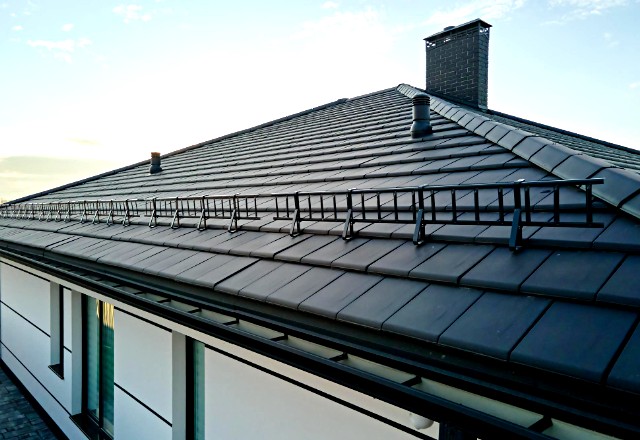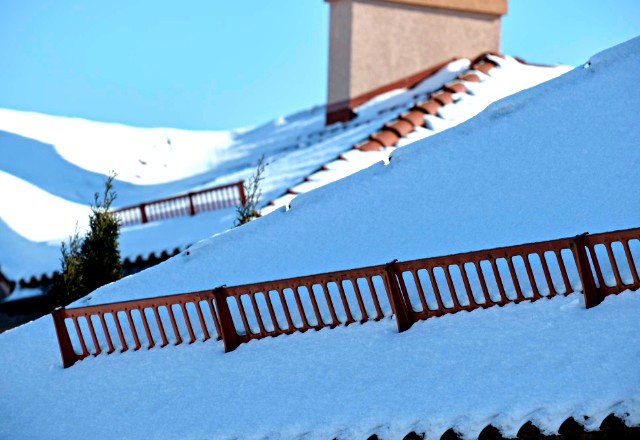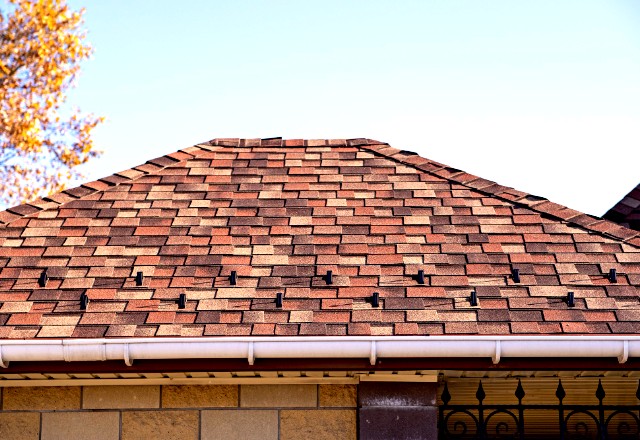For homeowners in cold-weather climates that experience regular snowfalls, heavy snow accumulation on the roof can be a nuisance and even hazardous without the proper precautions. This is where metal roof snow guards come into play. But how well do they actually work at managing problems like sliding ice and snow?
What Are Snow Guards?
Snow guards, sometimes referred to as snow brakes, are devices installed along the roofline to prevent excess built-up snow and ice from suddenly sliding off in hazardous sheets. They work by literally “breaking” the surface snow into small chunks to control the melt and move it safely off the roof edge.
Pros of Installing Snow Guards
- Prevent dangerous and damaging sheets of accumulated snow/ice from sliding
- Allow melt to drain slowly in a controlled fashion rather than large avalanches
- Reduce stress on gutters from excess volume dumping at once
- Prevents snow from piling dangerously against doors, windows, etc.
- Provides peace of mind for homeowners during harsh winters
Potential Cons
- Extra cost and labor to have snow guards properly installed
- Could require occasional maintenance or replacement over time
- Does not completely eliminate need for some manual roof snow removal
When Are Snow Guards Needed?
Homes with steep rooflines or standing seam metal roofs are ideal candidates, especially in zones prone to heavy, recurring seasonal snowfalls over 8 inches. They become vital safeguards for elevated roofs where falling snow poses risks to people, landscaping, or vehicles around the structure.
Models and Styles
Individual mounted cleats, continuous bars, and trenched designs that seamlessly integrate with the roofing material itself are popular options. Stainless steel, copper, aluminum, and galvanized steel are common durable metals used. Proper placement pattern and quantity is vital for snow management effectiveness.
1. Bar-Style Snow Guards: These are continuous snow guards that run along the length of the roof. They are effective in preventing large sheets of snow from sliding off, thereby reducing the risk of a roof avalanche. Bar-style guards are often used in areas with heavy snowfall.
2. Snow Fences: Similar to bar-style guards, snow fences are designed to hold back a snow blanket on the roof. They are more robust and can cover a larger area, providing an additional layer of protection.
3. Snow Cleats: These are individual mounted cleats that can be strategically placed across the roof. They are smaller than bar-style guards but can be just as effective in managing snow loads, especially in moderate snowfall areas.
4. Snow Retention Systems: This term encompasses a variety of snow guards, including snow rails, cleats, and bars. The type of snow retention system chosen depends on the roof’s style, the expected snow load, and the roofing material.
5. Snow Rails: Snow rails are similar to bar-style guards but are often used in a tiered pattern across the roof. They provide a strong barrier against snow sliding and are ideal for roofs that experience significant snowfall.
6. Pad Style Snow Guards: These are smaller, pad-like structures that are placed in rows across the roof. Pad style snow guards are versatile and can be used on a variety of roofing materials.
7. Profile Snow Guards: These are designed to match the profile of the roofing material, providing a seamless and aesthetic look. They are effective in breaking up the snow as it accumulates, preventing large masses from sliding off.
8. Plastic Snow Guards: Made from high-quality, durable plastic, these guards are a cost-effective alternative to metal options. They work well in areas with lighter snowfall and can be used on a variety of roofing materials.
9. Continuous Snow Guards: These run the entire length of the roof edge and are effective in evenly distributing the weight of the snow, preventing localized stress points.
10. Snow Birds: Decorative elements that also function as snow guards, snow birds are often used in residential properties for an added aesthetic appeal while providing snow retention functionality.
The choice of snow guards depends on several factors, including the type of roofing material, the style of the roof, the expected snow load, and aesthetic preferences. It’s important to consult with a roofing professional to determine the most effective type and placement of snow guards for your specific needs. Proper installation of the right style of snow guard can significantly reduce the risk of damage from a roof avalanche and ensure the longevity of your roof.
Types of Roofs to Use Snow Guards On
Snow guards are an essential component for many types of roofs, especially in areas prone to heavy snowfall. They play a crucial role in preventing property damage and ensuring the safety of both the inhabitants and passersby. Here’s a look at various roof types that can benefit from the installation of snow guards:
1. Metal Roofing: Metal roofs, particularly those with metal panels or standing seam roofs, are prime candidates for snow guards. The smooth surface of metal roofing allows snow to slide off easily, which can be hazardous. Snow guards help in breaking up the snow and ice, preventing large sheets from sliding off and causing roof damage or injury.
2. Shingle Roofs: While shingle roofs have more texture than metal roofs, they can still benefit from snow guards. This is especially true for shingle roofs with a steeper roof pitch, where accumulated snow can suddenly slide off.
3. Tile Roofs: Tile roofs, known for their durability and aesthetic appeal, also need snow guards. The smooth surface of the tiles, similar to metal roofs, can allow snow to slide off in large, dangerous sheets. Snow guards can help distribute the weight of the snow and ice more evenly.
4. Flat and Low Slope Roofs: While flat roofs may not experience snow sliding off, the weight of the snow can still cause roof damage. Snow guards in these cases can help manage the distribution of snow, preventing excessive accumulation in any one area.
5. Slate Roofs: Slate roofs are another type where snow guards are beneficial. The smoothness of slate can allow for sudden snow slides, and given the weight and sharpness of slate tiles, this can be particularly dangerous.
6. Synthetic Roofs: For synthetic roofing materials that mimic the look of traditional shingle, tile, or slate, snow guards are equally important. They ensure that the lightweight nature of these materials doesn’t contribute to unexpected snow slides.
 Virtually any roof surface with a slope can benefit from the installation of snow guards. They are particularly crucial on roofs with a smooth surface, such as metal panels, tile, and slate, where the potential for snow and ice to slide off and cause property damage or injury is higher. The type of roof material, roof pitch, and the typical snow load in your area are all factors to consider when determining the need for snow guards. Consulting with a roofing professional can provide insights into the best type of snow guard for your specific roofing system.
Virtually any roof surface with a slope can benefit from the installation of snow guards. They are particularly crucial on roofs with a smooth surface, such as metal panels, tile, and slate, where the potential for snow and ice to slide off and cause property damage or injury is higher. The type of roof material, roof pitch, and the typical snow load in your area are all factors to consider when determining the need for snow guards. Consulting with a roofing professional can provide insights into the best type of snow guard for your specific roofing system.
If correctly installed and maintained, metal snow guard systems are extremely effective at handling snow load stresses on sloped roofs when the weather shifts toward freeze and thaw cycles. Investing in the right snow management plan can save homeowners money over the long term by avoiding hazardous situations, erosion damage, and repairs needed from ice dams. Check with reputable local roofers that offer snow guard installation.
FAQ
What does a snow guard do?
Are snow guards really necessary?
Does ice guard go over or under drip edge?
How do I keep snow from falling off my metal roof?
How far up the roof should snow guard be installed?
How much is snow guard per linear foot?
Do snow guards leak?
How should snow guards be installed?
Do shingle roofs need snow guards?
What is the best type of snow guard?
Do snow guards protect gutters?
Can I install snowguards myself?
Disclaimer: The content of this article is for informational purposes only and not intended as professional advice. While efforts are made to ensure accuracy, no guarantees are made regarding the completeness or reliability of the information. Readers are advised to consult with qualified professionals at Advance Roofing LLC for specific roofing needs.



 509-201-4190
509-201-4190


